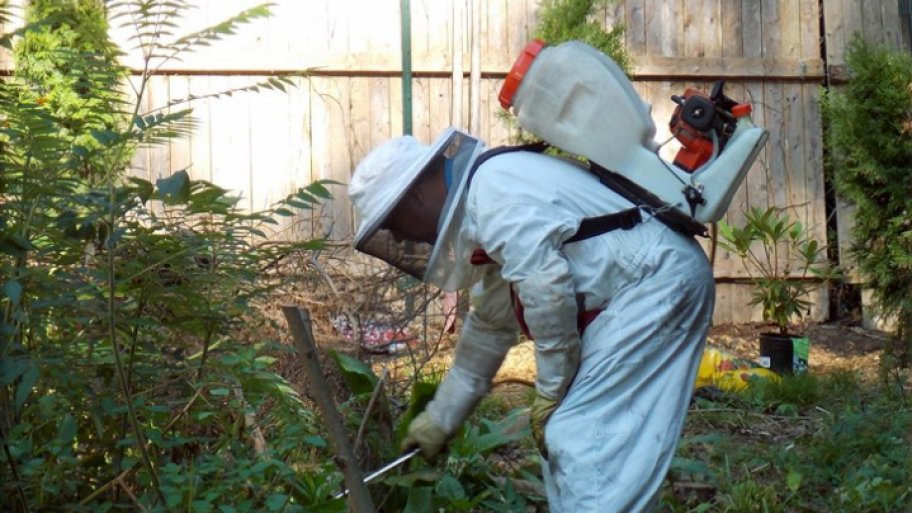Carpenter bees do not nest anywhere but in wooden tunnels or hollowed-out sticks. However, it is estimated that 70% of the 20,000 bee species in North America do nest underground. It’s no mystery why we get asked about ground-nesting bees every year. These nests are easy to identify. Usually, there is a mound of fresh dirt with a concave entrance hole in the center. (1) Both solitary and social bees nest underground.

It’s estimated 70% off the bee species in North America nest in the ground. Not wood structures like carpenter bees.
Solitary bees, with one female and male per nest, are less aggressive than social bees, which are part of a colony. They also have less energy to defend their homes since they must procreate, build, and nourish for themselves. (1) Common ground-dwelling solitary bees are digger bees and polyester bees. (3) Both types will sting if handled but are hard to provoke. In general, if left alone, these bees won’t bother you. (2) The colony species of ground-dwelling bees can be more aggressive, especially when defending their nests from intruders.
To determine if a nest is a colony, watch to see if there is a steady flow of bees coming and going from the ground. The bumblebee is a ground-nesting bee and is easy to mistake for a carpenter bee. Bumblebees will nest underground and are almost identical in appearance to the carpenter bee. The biggest physical difference between the carpenter bee and the bumblebee is the abdomen. Bumblebees’ abdomens are fuzzy while carpenter bees’ are shiny and smooth. (4)

A bumblebee ground nest can have up to 400 bees living in it!
Bumblebee nests can have anywhere from 50 to 400 bees living in them. Bumblebees are also known to survive colder weather conditions, so they generally have active nests longer than other bee species. Both the male and female may attack if the nest is disturbed, and both can sting. Also, bumblebees are able to sting repeatedly (unlike honey bees, which can only sting once.) Because of these factors, bumblebee nests must be handled with extreme care.
Anyone with venom reactions should keep a bee sting kit handy. A bumblebee nest generally only lasts one season, so by wintertime, the bees will have gradually died off or relocated naturally. (4) For help with a swarm of these important pollinators or to get advice on how to move a nest yourself, try contacting a local beekeeping association or university extension program in your area.
Carpenter bees stay true to their name and only nest in wood. But with such a variety of bees nesting in the ground, it’s easy to get confused. Be careful in your assessment and always handle bees with care.

The type of nest is one key indicator you have a carpenter bee infestation. This damage was done by carpenter bees.
References:
- “Ground Nesting Bees in Your Backyard!” Ground Nesting Bees in Your Backyard! | Department of Entomology, entomology.cals.cornell.edu/extension/wild-pollinators/native-bees-your-backyard/.
- Hadley, Debbie. “Do Not Be So Quick to Kill Ground Bees.” ThoughtCo, 10 Dec. 2019, www.thoughtco.com/how-to-id-and-control-ground-bees-1968396.
- “Colletes Inaequalis.” Wikipedia, Wikimedia Foundation, 30 May 2019, en.wikipedia.org/wiki/Colletes_inaequalis.
- “Bumble Bees as Pollinators.” Clemson Cooperative Extension, Clemson University, https://www.clemson.edu/extension/beekeepers/fact-sheets-publications/bumble-bee-pollinator.html.









Leave a comment
All comments are moderated before being published.
This site is protected by hCaptcha and the hCaptcha Privacy Policy and Terms of Service apply.